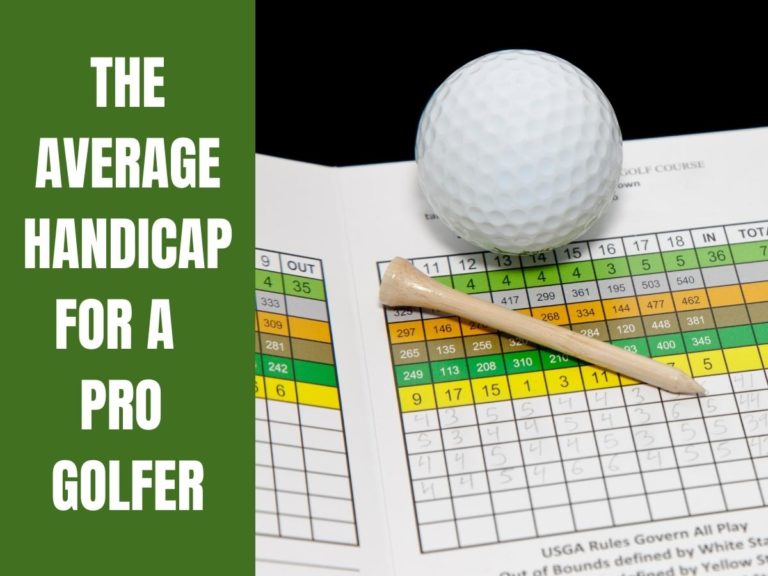Is A 5 Handicap Good In Golf?
In golf, your handicap is a measure of how you play, on average, per round. To have a low or high handicap is relative. It depends on the quality of players at your golf club and the golfers you usually play with.
A golfer who wishes to play in amateur tournaments needs an established handicap, whether “good” or “bad.” So, how good is a 5 handicap in golf?
A 5 handicap is very good. Male golfers in the U.S., with a handicap of 5.0 to 5.9, fall into the top 12.68% of their peers. However, U.S. female golfers within the same handicap range fall into the top 2.35% of their peers. On average, a golfer with a 5 handicap will shoot 76 to 80 shots a round.
Since a golfer’s handicap is a measure of their potential, it allows golfers of different abilities to play against each other. At the end of the round, a golfer’s handicap is subtracted from their total shots. This equalizes each golfer’s handicap for that round.
Let us read further to see how a golfer with a 5 handicap compares to their peers.

How Good Is A 5 Handicap In Golf?
A 5 handicap in golf is very good, although it does not put a golfer in the top 10% of golfers in the United States. For perspective, to be in the top two percent of golfers in the U.S., you would need a handicap of 4.9 or lower. To be in the top five percent of golfers, you need to have a handicap of around 2. Roughly 170,000 golfers in the U.S. have a handicap lower than 5.
The average handicap for male golfers in the US is 14, while the average handicap for female golfers is 27.7. In addition, the top golfers in the PGA Tour have handicaps ranging from +6 to +8. With that information, we can see that a 5 handicap is nothing to be scoffed at, but it is a relative rating.
Men and women golfers have different distributions according to the USGA Handicap Index. According to these distributions, 2.91% (just over 50,000) of male golfers in the U.S. have a handicap in the 5.0 to 5.9 range. In comparison, 0.37% (fewer than 2,000) of female golfers in the U.S. are in the same range.
To see how your handicap compares to other U.S. golfers, you can view the two distribution charts and find other handicapping statistics here.
What Does A 5 Handicap Shoot?
A golfer who shoots between 76 and 80 will have a handicap between 3 and 5. The average number of shots for a 5 handicap is 80. All golfers have different strengths and weaknesses. For example, a golfer with a 5 handicap may be better at driving than putting, or vice versa.
On average, a 5-handicap golfer can hit 90% fairways, 75% greens, and around 32 putts on any given day.
My Golf Spy studied the overall golfer performance by handicap and collated some interesting data from a total sample of 15,000 participants. When comparing birdies, pars, and bogeys, they discovered the following averages per round. The results below are of golfers with a handicap between 1 and 5:
- Birdies: 1.5
- Pars: 9
- Bogeys: 5.9
- Double Bogeys: 1.3
- Triple Bogeys: 0.3

Psst! Are you a 5 handicapper and looking for new irons? Check out this article, 4 Best Golf Irons For 5 Handicap Players.
How Is A Handicap Index Calculated?
According to the United States Golf Association (USGA), a golfer with less than 20 scores on their scoring record can calculate their handicap index with a minimum of three 18-hole scores.
Additionally, solo golfers are not permitted to submit their scores due to the lack of “peer review.” However, this excludes players with a caddie, tournament marker, or friend accompanying them.
When the golfer has twenty or more scores on their scoring card, they can calculate their handicap index by averaging the eight most recent score differentials.
The resulting value can be adjusted in some unique cases: for example, when the golfer submits an exceptional score of 7.0 strokes or better than their current Handicap Index.
All scores must be recorded and submitted to the relevant golf course so they can monitor players’ scores and report back to the USGA.
According to Golf Digest, there are some flaws in the new World Handicap System (WHS). Before, the USGA gave the following formula to measure a golfer’s handicap based on the course they played:
Course Handicap = Handicap Index x (Slope Rating/113)
As of 1 January 2020, the WHS was placed in effect, adding the dimension of course rating and par to the equation. As we know, some courses are more complicated than others but still have the same par as a more straightforward course. As you can imagine, this could affect your handicap index positively or negatively, depending on the golf courses you play.
The new WHS formula is:
Course Handicap = Handicap Index x (Slope Rating/113) + (Course Rating – par)
Which Pro Golfers Have A 5 Handicap?
Professional golfers do not actually have official handicaps because they are already contesting evenly. This means they do not keep their scores. However, the handicap range of top-ranked amateur golfers is +2 to +5, so it could be safe to assume that professional golfers would have handicaps slightly above that.
Despite pro golfers not having official handicaps, Lou Stagner took it upon himself to crunch some numbers to work out their handicap indices. He took data from their scores on tours and calculated the USGA Handicap Indices for Rickie Fowler, Dustin Johnson, and Tiger Woods.

Incidentally, the average tour pro has an average handicap index of 5.4+.
- Rickie Fowler’s lowest Handicap index was +8.4.
- Dustin Johnson has the best Handicap Index average, +6.5.
- Tiger Woods‘s Handicap is about +6.3.
To learn more about this topic, check out this article, The Average Handicap For a Pro Golfer.
Why Do More Men Have A 5 Handicap Than Women?
We have read that fewer female golfers have a 5 handicap than their male peers. You may also have noticed that men and women tee off from different tees at the same hole. But why the difference in tees and in handicap index distribution?
Firstly, each course’s Standard Scratch Score (SSS) will determine the expected gender-specific score for a ‘scratch’ golfer on that course. This is to accommodate the fairer sex to a degree because men are usually physically stronger and faster than women. However, there are exceptions.
Men can usually drive a golf ball further down a fairway than women, creating a shorter distance between the ball and the flag. The SSS accommodates players of different sexes in this regard.
Secondly, the professional opportunities for female golfers are generally fewer than those offered to men. This is because, in most sports, the male prizes are more lucrative than those for females. However, this could change as more women play golf competitively and the demand is heightened.
Thirdly, golf has predominantly been a male-dominated sport. However, this is also changing as more women enjoy and play the sport more frequently. In addition, some women enjoy the increased challenge of playing against men as it can help to improve their game more rapidly.
You can read more on why golf is divided by gender here.
Final Thoughts
When answering the question, “is a 5 handicap good,” let’s evaluate the statistics:
A 5 handicap is above average when compared to the USGA Handicap Index distribution. Only 2.91% of male golfers and 0.37% of female golfers in the U.S. have a handicap between 5.0 and 5.9. If professional golfers had handicaps, they would be slightly above 5+, indicating that a handicap of 5 is something most golfers can be proud of.
Related Posts You May Like:






